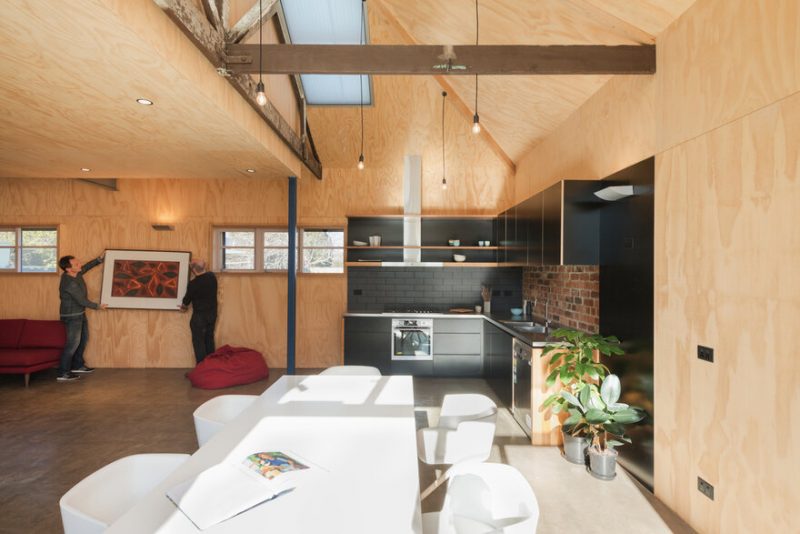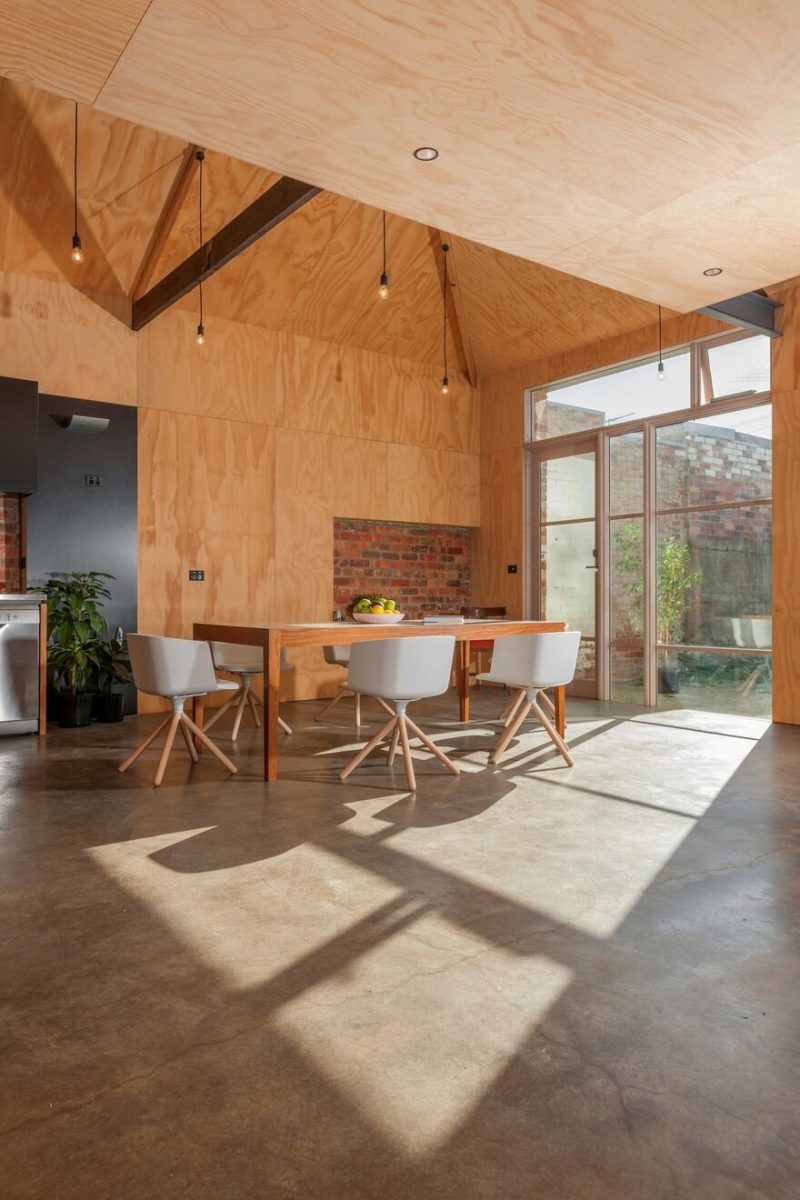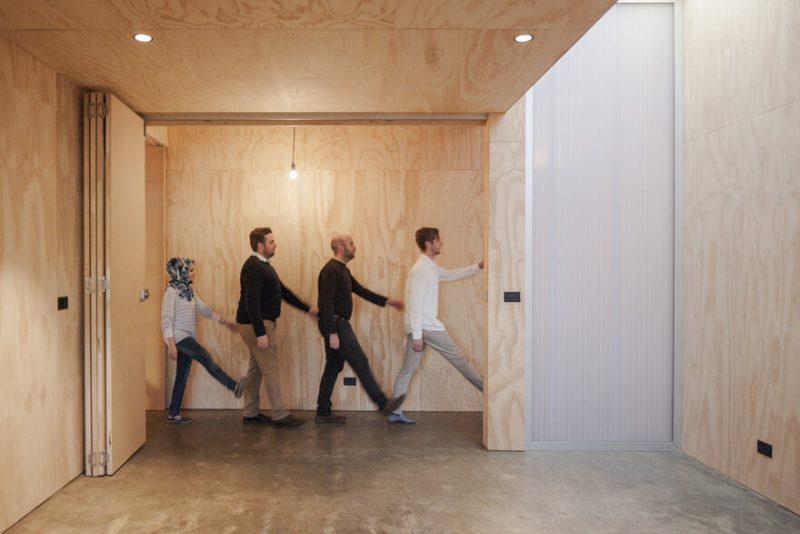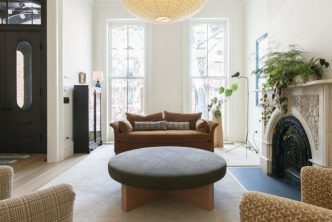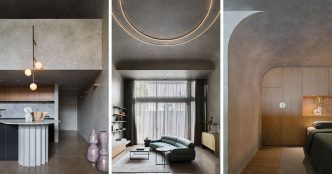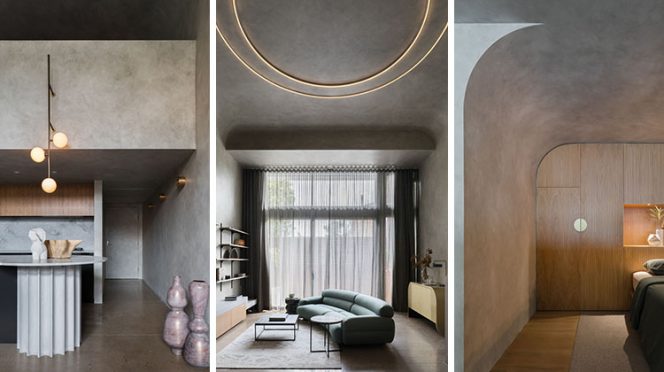This project is about recognising the spirit of a place. Located in Melbourne’s inner-city opposite a suburban train station this is a re-assembly of an old factory building to become a home with studios for an artist and musician.
The original building formed an integral part of an urban neighbourhood but proved to be too deteriorated to be saved. After exploring options of retaining the existing structure we decided to partly demolish and rebuild the brick shell in its original form with the materials salvaged on site. A new first floor bedroom wing was inserted as a lightweight structure supported by a steel frame and defines the living area below. The studios were built as commercial spaces reduced construction cost.
Our approach of retaining the spirit of the original fabric continued into details. Unfinished materials were employed to create a non-precious environment that is easy to use and maintain.
The former stable and later print factory was purchased with the intention to renovate and turn it into studios and a house. Part of the building’s appeal that was its atmosphere, textures and patina expressing its history.
Careful investigation revealed that the building could not be saved with reasonable means and a conversion could not achieve required energy efficiency and thermal performance. Various options were explored: a new house design, prefabricated modular buildings but none suited the brief and made a valuable contribution to the urban fabric in this location.
The driver for our design concept was the contribution of the place to its immediate environment. This led to partially demolishing old walls and roof, removing the slab and rebuilding using the original bricks. Rebuilding enabled the new dwelling to achieve a good thermal performance while maintaining the tactile and aesthetic qualities of an aged structure. Parts of external wall and roof trusses (non-compliant under current structural codes), were kept, reinforced and merged into the aesthetic concept. The new program could be realised with modest and simple insertions and additions.
What were the key challenges?
What was thought to be a warehouse conversion on a tight budget turned into demotion and building a new home and studio on a tight budget.
In addition we wanted to incorporate best practice design and thermal performance on a modest budget into an aged structure, while retaining the building’s spirit of place and contribution to the community.
How is the project unique?
We made the most of what we could and re-assembled the old factory building with materials salvaged on site to make it structurally sound and more thermally efficient. We took down most of the walls, cleaned the bricks and put them back together again, reducing embodied energy as well.
One unique feature of our warehouse/studio/residence we are proud of are our approach to finishes. We wanted a place that is non-precious and accessible. It had to be ready for use: simple finishes, low cost, low maintenance. So we left materials rough or unfinished wherever we could. The concrete slab has a steel trowel finish, walls and ceiling are lined with plywood uncoordinated and unfinished, and some ceilings are made from polycarbonate, an off-the-shelf material. Kitchen joinery has black form ply, stainless steel benchtops and both raw and black-painted brick splashbacks.
On the other hand we didn’t skimp on insulation, double glazing and ESD features that make it comfortable and affordable to run.
Photographer: Wolf-Peter Steinheisser

